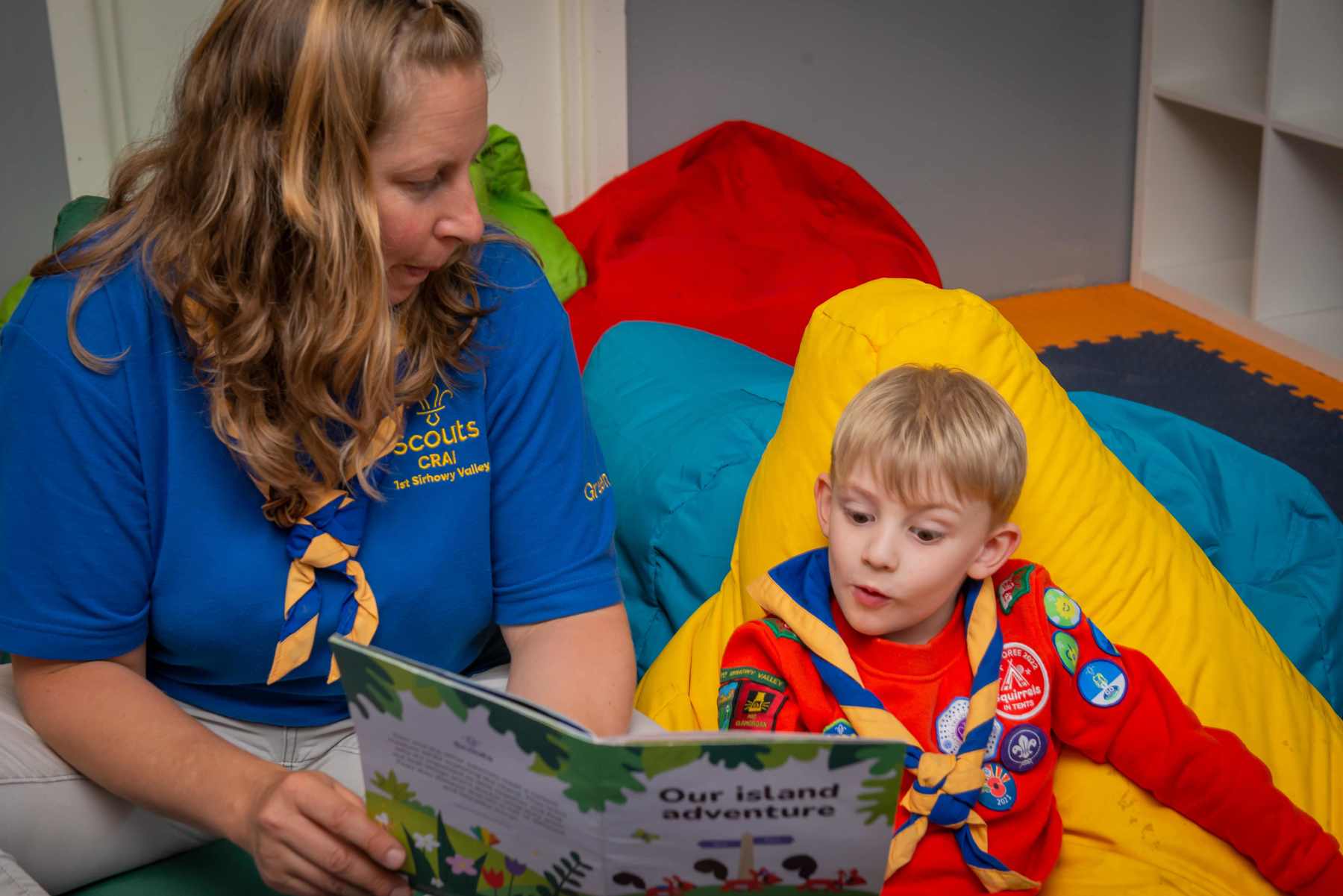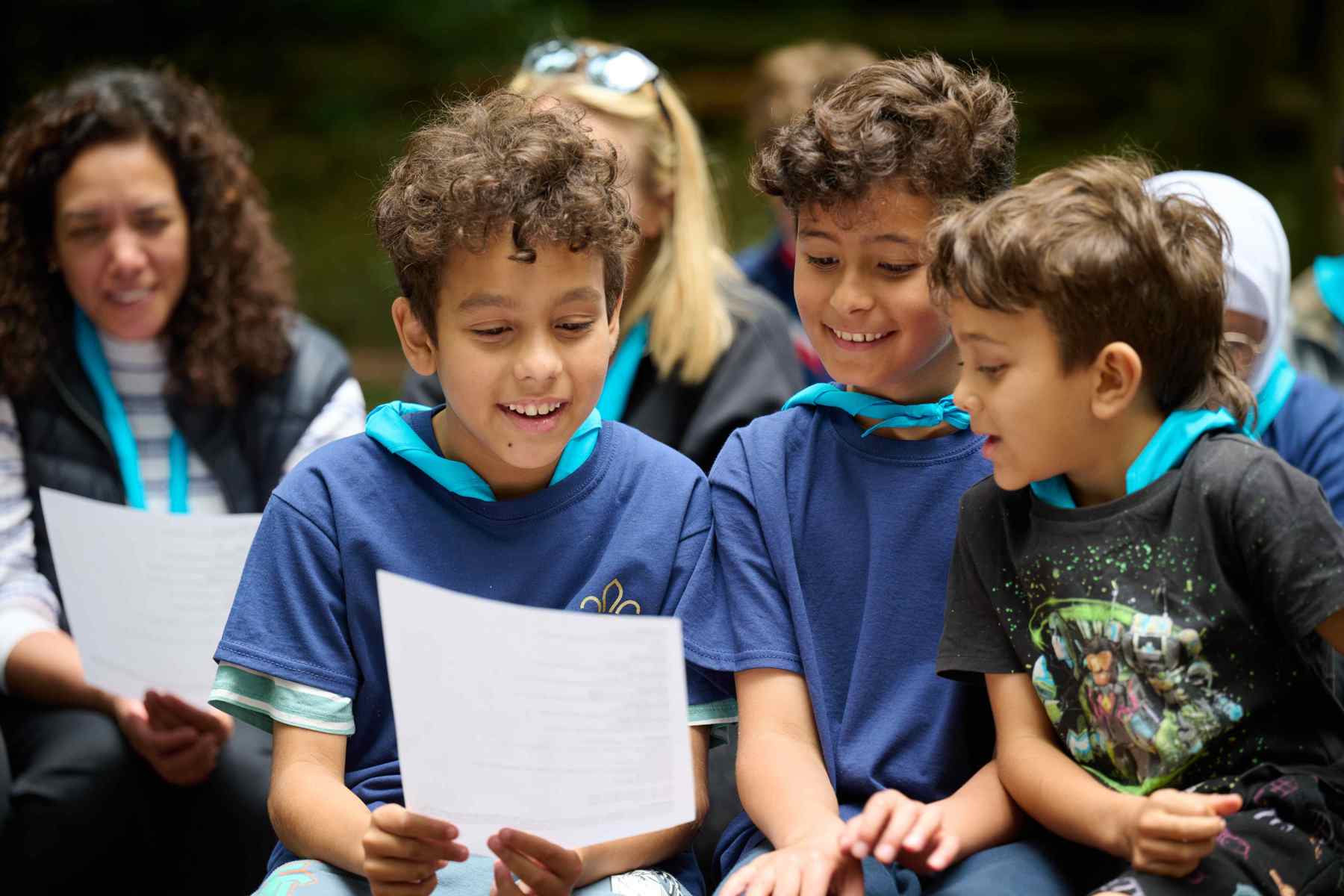Top tips for storytelling to spark the joy of reading in young people
Storytelling can have an amazing impact on young people, inspiring learning, creativity, and imagination. We’ve teamed up with the Bookmark Reading Charity to put together some top tips on how best to integrate storytelling into your Scouts programme.

Struggling to read at an early age can mean young people find school harder and are less likely to be able to read as adults. Every year, one in four children leave primary school unable to read well. Young people from disadvantaged backgrounds are usually worst off.
For young people living in deprived areas, which are being hit the hardest by the cost-of-living crisis, books can be hard to come by. In 2023, the National Literacy Trust found that 1 in 5 parents or carers said they were buying fewer books for their children. This increases to 1 in 3 (36.1%) of those who were financially struggling.
Helping young people to read can have a massive impact. If young people are supported to improve their reading skills, then their future health and employment will look so much brighter.
So how can storytelling benefit young people?
Storytelling can encourage a life-long love of reading. It’s more than just reading the text in a book. It can be used to create a sense of wonder and magic, unlocking all the benefits of reading.
Making storytelling part of a young person’s day supports them to become engaged and confident storytellers themselves – a skill they can use for life. And let’s face it, storytelling is a joyful experience for both the teller and the listener!
Take a look at some top tips on storytelling from Bookmark Reading Charity, who are an organisation that partners with schools to develop whole school reading cultures and to provide one-to-one reading support.
Don’t forget about the Story Time Activity badge for Squirrels, too.

Storytelling top tips:
-
Create a comfortable, fun and relaxing atmosphere when introducing a story, so that everyone’s ready to listen and be hooked by the story from the start. You may want to have comfy seats, colouring pens and paper, or some toys that reflect the characters in the story.
-
Always read the story first, before reading it to other people. This’ll help you identify anything that could be used to maximise the engagement of the story, such as repeated words. Reading the story beforehand will help you get to know the words, making you feel more confident for reading aloud.
-
If you’re sharing a physical book, make sure everyone gets the opportunity to see what’s on the page.
-
Before you even start your storytelling session, give everyone sneak peek of the story. Whether this it’s the title, a picture, the blurb or a character, this’ll create excitement for what’s to come!
-
Pick out a couple of things for listeners to try to spot during the story, such as a certain character or object.
-
Ask questions about the pictures or what people think might happen next as you go.
-
Speak clearly and vary the volume, pitch and tempo of your voice while reading aloud. Try to exaggerate different expressions and create character voices. This helps people to distinguish between characters and recognise the emotions you are displaying!
-
You could give people different props, costumes, toys or roles, then let them act out the story.
-
Sound effects are very engaging for people to join in with. There’ll be plenty of words or actions in stories that you can create a sound effect for, such as footsteps, animal noises or wind in trees.
-
Why not have an active listening story, so every time a certain or repeated word is mentioned everyone must do a certain action or say a word in response?
-
Sit in a circle and choose four certain repeated words from the story. Give everyone one of the four words, making sure people with the same word are spaced out. When their word is said, people should jump up, move round the circle and sit back down in their spot. This helps keep people listening!
-
Remember, everyone appreciates stories in a different way, so adapt your storytelling as needed. You may want to have actions or movements involved. People could lie down or colour in as they listen. You could act out stories or let people take turns reading.
To watch in full screen, double click the video
What you can do to help
You can help by making storytelling part of your programme at Scouts. Whether it’s comic books, pictures or poetry, look at our activities that involve books and reading.
If you want to take it further, why not open your own Scouts library for young people to be able to access books? You could let each person borrow a book per week. You could also have a book swap or set up a library visit. For older Scouts, why not run your own book club? Or have a joint storytelling session too, letting older Scouts read to younger ones?
You can also find out more about volunteering with Bookmark and spark the joy of reading in young people.